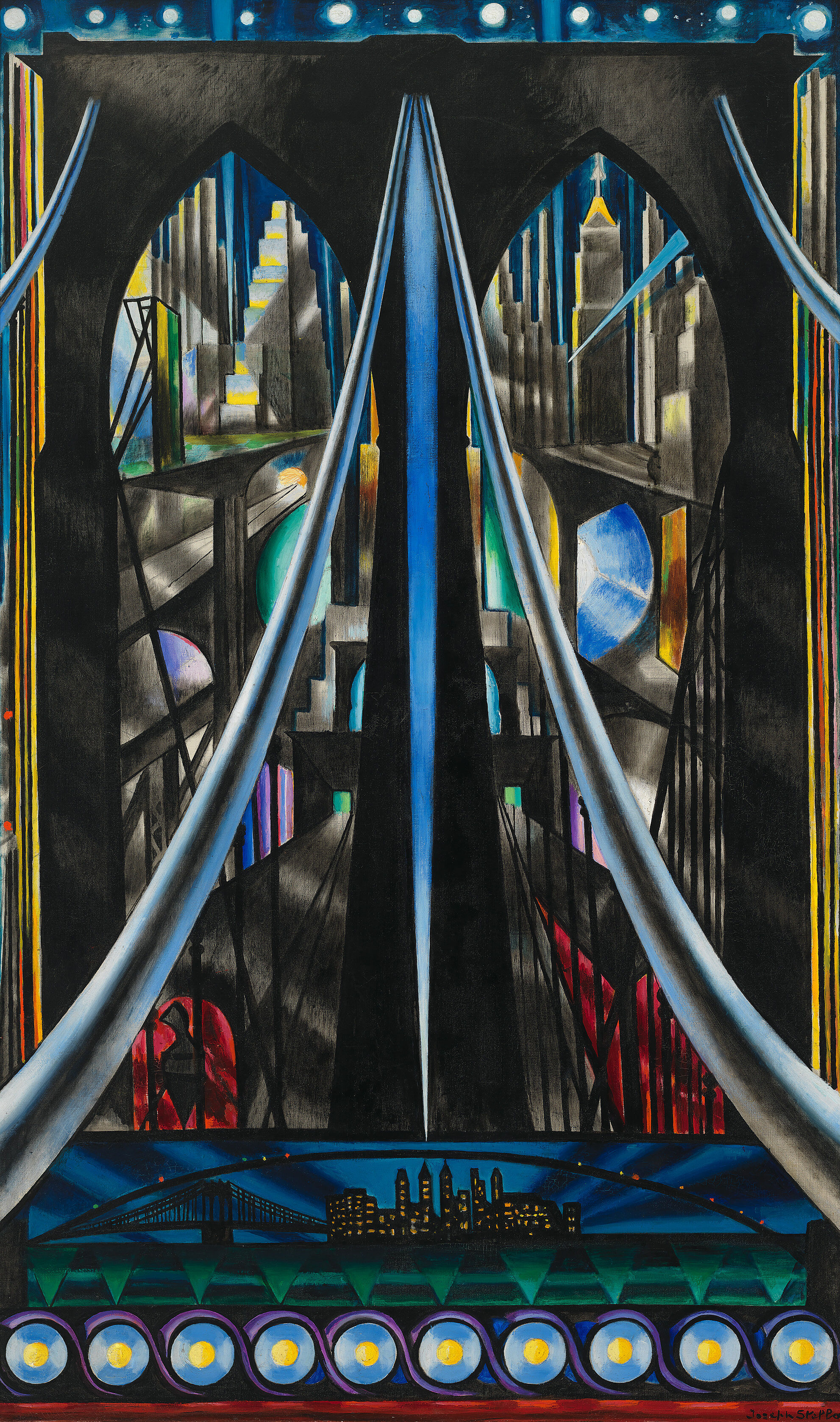Joseph Stella, The Brooklyn Bridge: Variation on an Old Theme, 1939
Find and describe neighborhood monuments.
For Joseph Stella, the Brooklyn Bridge was a monument of modern America. Its large towers, glowing lights, and technical ingenuity marked a great moment in New York history, and demonstrated people's ability to transform their environment through the use of technology.
First, discuss the concept of monuments with your class. Why does Stella consider the Brooklyn Bridge as a monument? What are monuments they know? Where are monuments usually found? What is their purpose?
Ask students to locate and document different monuments in their neighborhood. Give students a copy of a neighborhood map. Each time they find a monument, have them circle its location on their map and record the following information in their notebooks or journals: Where is this monument? Was it easy to find and/or see from a distance? Why or why not? What event or person does it document? What information does the monument provide? Have students make sketches of the monuments they find.

